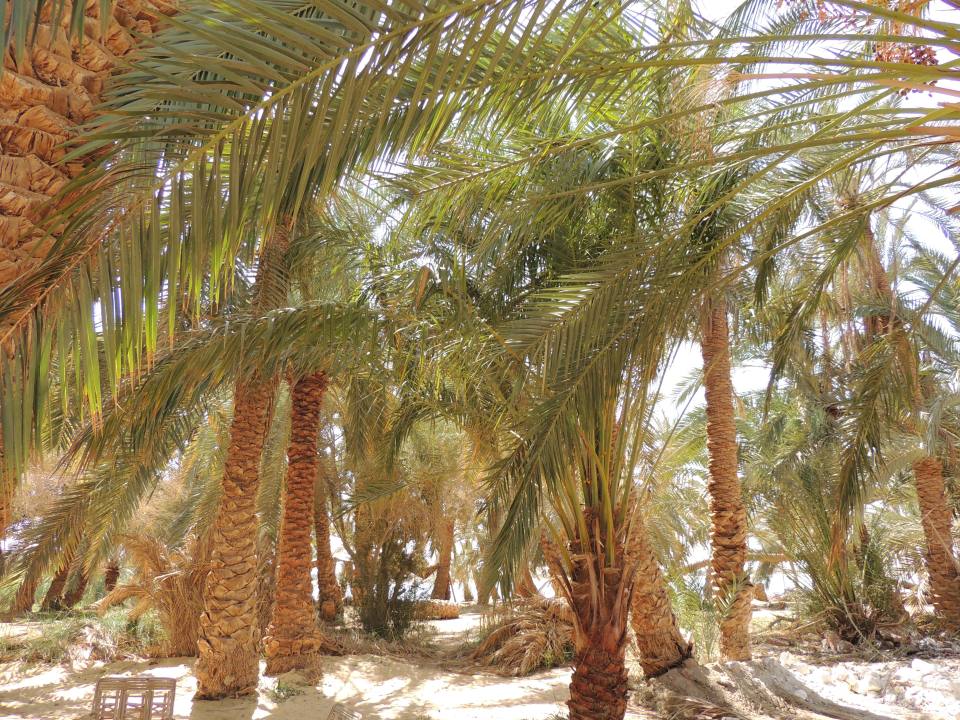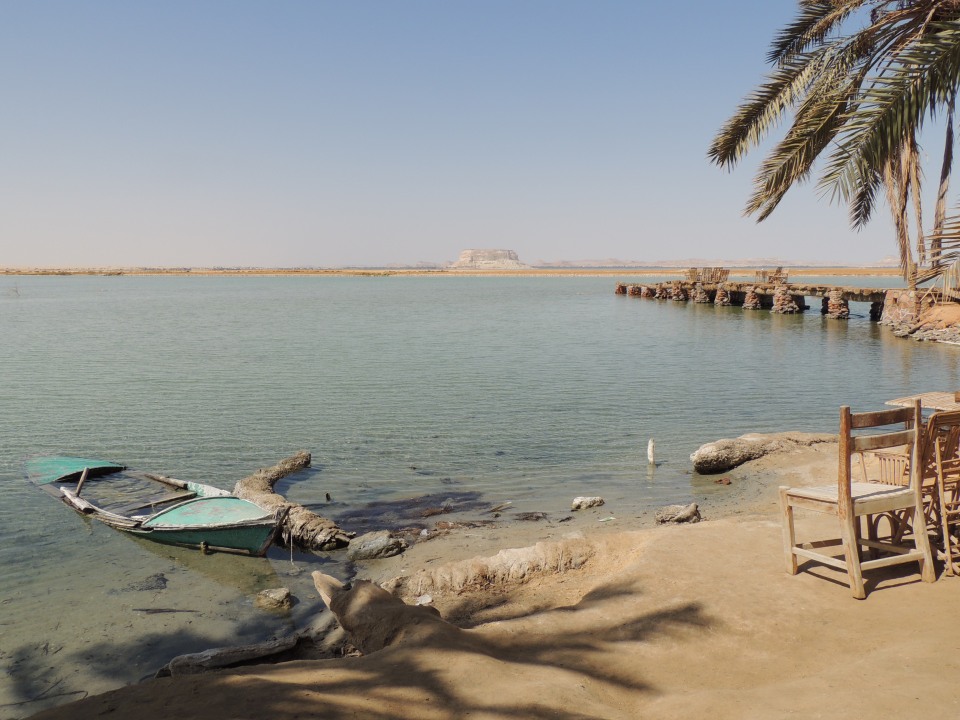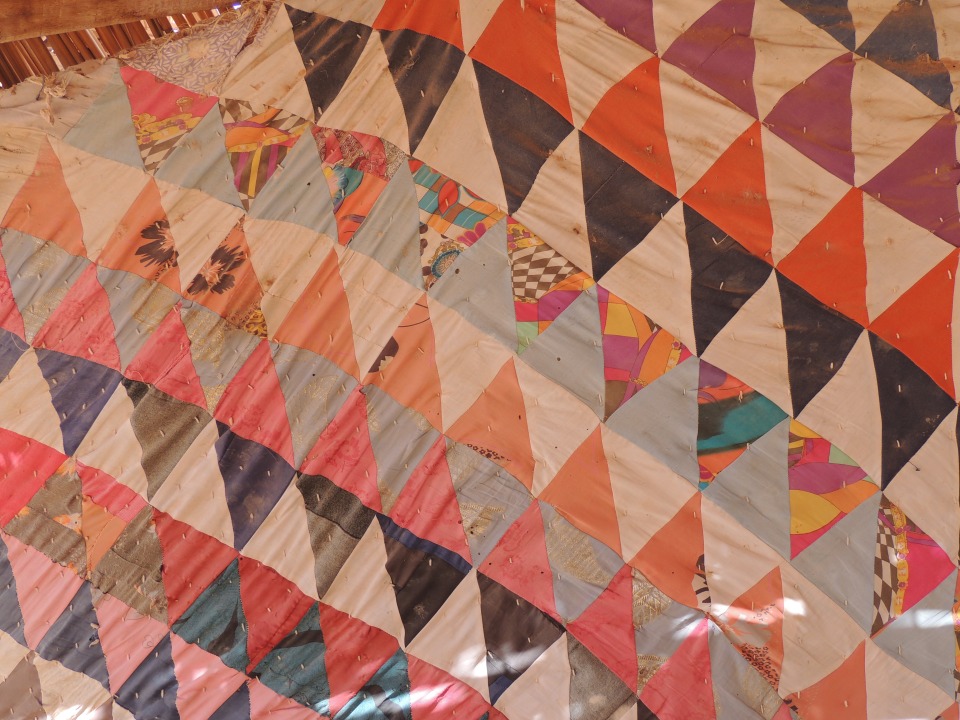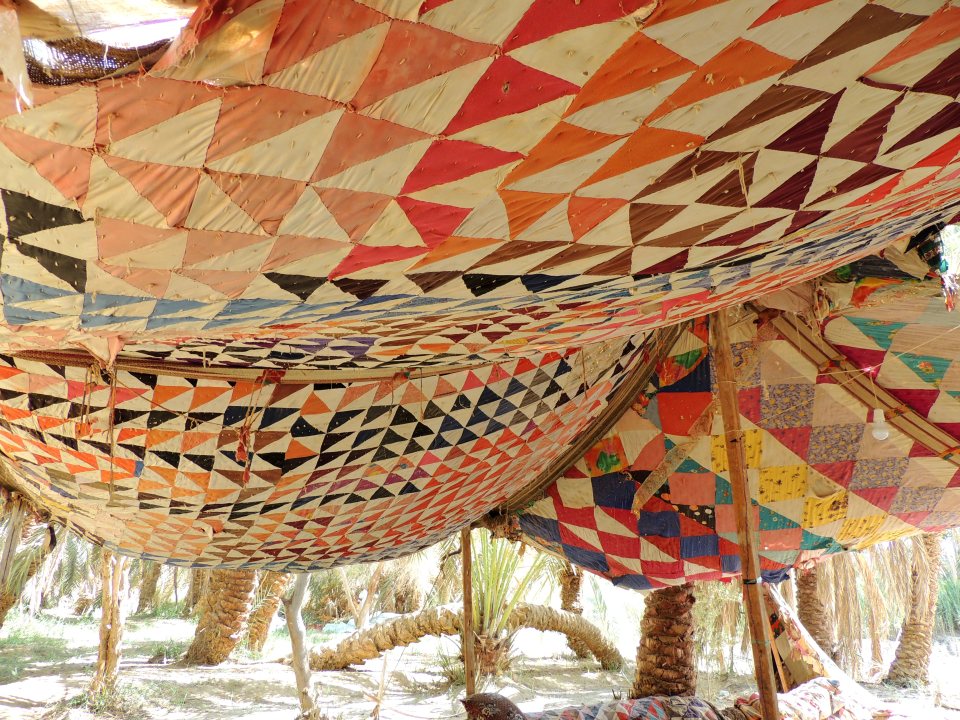Home » Posts tagged 'سيوة'
Tag Archives: سيوة
Patchworking Life رُقع الحياة
علي ضفاف بحيرة ساكنة في وسط الصحراء جلسنا لشرب الشاي – شاي بعشب الليمون المعروف هنا. للحظات سرحت مع جمال الطبيعة …مياه ساكنة، نخيل محمل بالتمر في أوج موسمه، قارب مهجور علي ضفاف البحيرة، كراسي من جريد النخيل و إذا ما تركت ضفة البحيرة لتتجول علي هذه الجزيرة الصغيرة، تصل إلي عين ماء ساخن تتفجر من الأرض
On the shores of a peacful lake in the middle of the desert, we sat down for a cup of tea with lemon grass, popular around here. For a few moments, I drifted away with the beauty of nature…silent waters, palms heavy with dates at the peak of season, a deserted fishing boat, chairs from palm leaves…and if you would stroll away from the shore to explore this small island, you would come upon a hot water spring..

جزيرة فطناس – سيوة – مصر
كنا في جزيرة فطناس بواحة سيوة في صحراء مصر الغربية و كل هذا يبدو كلاما قد كُتِب من قبل، فمن لم يُسحر بجمال الطبيعة في سيوة؟
We were at Fetnas Island in Siwa Oasis in Egypt’s Western Desert. All what I have described above has been stated before. After all, who was not smitten by Siwa’s charm?

و لكن في لحظة شىْ ما لفت إنتباهي. إنها تلك المساحة المفروشة بالقماش علي ضفاف البحيرة لجلسة إسترخاء أو حتي تعسيلة…ألوان باهتة و قد تقطع القماش في أكثر من مكان و إقتربت قليلا قليلا…لم تكن هذه مجرد عدة أمتار من القماش فُرشت علي الأرض الترابية بل كانت عملا فنيا مبهرا يذبل في صمت
But at one point, something drew my attention. It is that spread on the shore of the lake where you can lay down and relax, possibly snooze for a while. The colours were faded, the fabric was torn in a numer of places…I got closer and closer..these were not just a few meters of fabric spread on the earthy ground, but rather an impressive piece of art wilting in silence…
المساحة كلها كانت عبارة عن عشرات المثلثات من الأقمشة القنية تم خياطتها باليد لتشكّل منظومة هندسية و العمل كله مبطّن بنسيج من ألياف – غالبا من جذوع النخيل حين تقليمها – و إسم هذا العمل الفني “بيت الشعر” – بفتح الشين
بحسب قول أصحاب المكان، يتم صنع هذا الإبداع في مكان ما حول مدينة مطروح
The whole area was made up of tens of fabric triangles handsewn togther to form a geometrical design and lined on the underside with a weave from fibres – possibly from palm fibres – and is know as “beit el shaear”or “the hair house” if literally translated to English. This creative work is being done – according to the locals – around the city of Matrouh.
عملية إستخدام بواقي الأقمشة في صنع أغطية للفراش أو لوجه اللحاف في تركيبات هندسية هي عملية معروفة و في الغرب – الولايات المتحدة بالأخص – هناك إهتمام كبيربها و لها جمعيات لمحبي ممارستها و لها مجلات و دوريات و مسابقات و تُسمي ب”الباتشورك” أو شغل الرُقع
و يعتبر فن الخيامية فرع من فروع الباتشورك و هو الأبليك
The process of sewing rags of fabrics in geometric designs to make covers or quilts is well known. In the West – particularly in the USA – there is a huge interest in this craft..there are societies, magazines, periodicals and competitions for patchwork lovers. The Egyptian craft of “khayamia” is considered a form of applique patchwork.
ما ام أعرفه أنه في مكان ما في مطروح، تعتبر الباتشورك أو شغل الرُقع حرفة. كيف ظهرت هناك؟ هل هي موجودة بنفس الطريقة في أماكن أخري في مصر؟ هل هي حرفة نسائية أم يحترفها الرجال؟
What I did not know is that somewhere in Matrouh, patchwork is a traditional craft. How did it start there? Is it practised in the same way in other parts of Egypt? Is it a women’s craft or is it practised by men?
ما لم أعرفه أن أقدم قطعة من شغل الرُقع وُجِدت في مصر و يرجع تاريخها إلي عام 980 قبل الميلاد!(1) ا لقطعة محفوظة بالمتحف المصري و هي ظلة (أي ما يُعلق للإستظلال به مثل التندة أو الشمسية) من قصاقيص الجلد المصبوغة أو المدهونة بالألوان الوردي و الأصفر و الأخضر و الأزرق و يُرجّح أنها كانت لإحدي الأسر الغنية في ذلك العصر
What I did not know is that the oldest known piece of patchwork was found in Egypt 980 BC (1). The piece is preserved in the Egyptian Museum in Cairo and is a canopy made of pieces of dyed or painted leather in pink, yellow, green and blue. It is thought to have belonged to one of the rich families of that time.
ما الذي نعرفه عن تاريخ فن الرُقع أو الترقيع في مصر؟ هل هناك ما يؤرخ له؟ ناهيك عن فكرة أن هذا مثال رائع لإعادة التدوير و صفرية المخلفات قبل أن يتم إستخدام هذه التعريفات و المسميات بألاف السنين
What do we know about the history of patchwork in Egypt? Is it documented? Apart from the fact that this is a superb example of of recycling and zero waste that was applied thousands of years prior to using these terms.
إن الأبهار في “بيت الشعر” المطروحي ليس فقط في تركيبته الهندسية التقليدية بل في القدرة علي الإلتزام بالتركيبة الفنية في مساحات كبيرة جدا – ليست مجرد غطاء للفراش أو وجه لحاف بل أن تلك المشغولة الذابلة علي ضفاف بحيرة فطناس أبعادها تقريبا 9 أمتار طولا و متران عرضا
و علي بعد عدة أمتار في قلب الجزيرة، وجدتها: الظلة من شغل الرُقع كتلك المذكورة في مقتنيات المتحف المصري
The amazing thing about “beit el shaear” lies not only in its traditional geoometrical composition, but in the skill to maintain the artistic composition over a very large area – not just a bed spread or a quilt – but that patchwork spread on the shore of Fetnas Island measures approximately 9m long by 2m wide.
And a few meters away, in the heart of the island, I found it: the canopy of patchwork similar to that mentioed to be housed in the Egyptian Museum.
هل يدل هذا علي أن حرفة الترقيع ممتدة في تاريخنا منذ ما يقارب ألف عام قبل الميلاد؟ إي أن عمرها 3000 عام؟
Does this support a theory that patchwork is a traditional Egyptian craft that dates to alomost 1000 BC? That is 3000 years old?


لا أدري و لا أعرف أين أجد الإجابة و لكن ما أعرفه هو حاجتنا للبحث و التوثيق و التعريف بحرفنا المصرية حتي لا تضيع و تضيع معها جزء هام من هويتنا
معا للحفاظ علي حرفنا المصرية
معا لتوثيق حرفنا المصرية
معا للتعريف بحرفنا المصرية
I do not know and have no idea where to find the answer. What I know is our need to search, document and familiarize ourselves with our Egyptian crafts so that they are not lost and with their loss we would lose an important part of our identity.
(1) Source: The Quilt
By Elise Schebler Roberts, Helen Kelley, Sandra Dallas, Jennifer Chiaverini, Jean Ray Laury



